Whether you’re an SEO or Marketing Manager for an eCommerce company, or a small eCommerce business owner, you know the search engine optimization space is ever-changing. At its core, it’s a constant cat and mouse game between SEO professionals, search engine technology, and user behavior. Search engines adapt to the user, SEO’s adapt to the search engines, and the cycle continues.
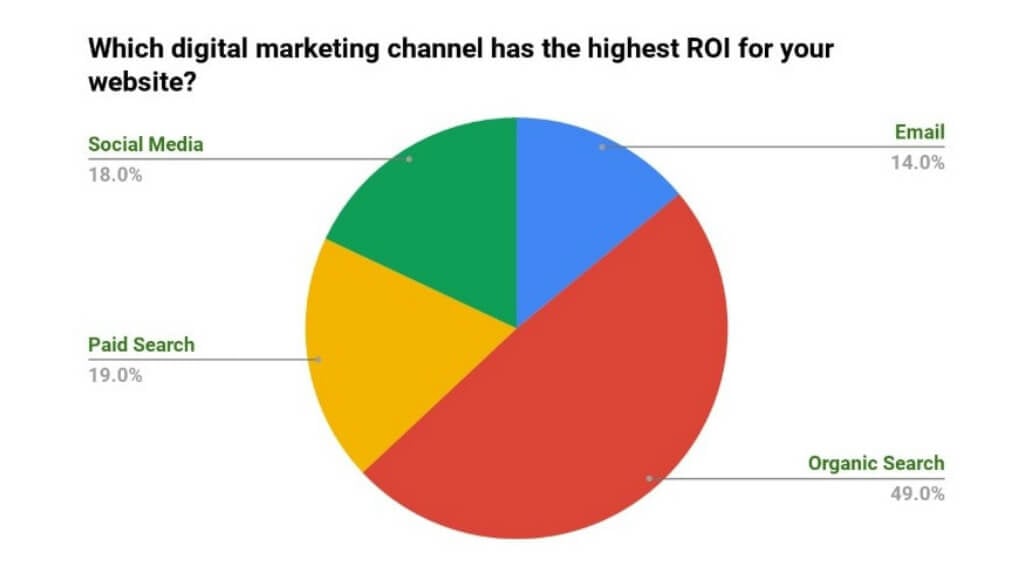
Despite this pace of change, any SEO professional worth their salt knows it’s crucial to cover the fundamentals in order to continue leveraging the marketing channel which delivers the highest ROI. What are these fundamentals? Often you’ll hear them referred to as “best practices”. A somewhat vague term that gets thrown around most workplaces. But also a term that can be undervalued. When some people hear best practices they might think “I should do that, but I don’t have to”. When it comes to your SEO strategy, this attitude can prove costly.
It’s not just about keywords
One of the most common perceptions of SEO is that it is essentially about using the right keywords in the right places. While this is not wrong, it’s really only a small part of the puzzle. Ten years ago, keywords may have been a cornerstone of SEO success, and people found all sorts of creative ways to use them and get results. But now, search engine algorithms have become significantly more sophisticated, and rank websites based on a huge number of factors. Trickery of any sort (keyword stuffing for example) will be ignored and sometimes punished by Google.
Does that mean you should ignore keyword research? Not at all. It simply means taking a strategic and targeted approach to this research, and knowing how to use it. The real cornerstone for organic success nowadays is a combination of great UX, well-placed content and solid technical fundamentals.
Technical SEO - The foundation for success
Let’s say you want to sell a new clothing line to a wider audience online. When you think about what is needed here for success from an SEO and UX point of view, a few things come to mind right away. Great design, fast page speed, visual product pages (PDPs), a smooth purchasing funnel and a sleek, secure checkout process. All of these are crucial, of course. But there are some often overlooked elements that you need to cover in order to maximize your presence in the SERP.
Structure & Information Architecture
It all starts with a logical site and URL structure that is easy to read both by users and search engines. You’ll want to avoid the temptation to just put everything under a subfolder like /products/. That would the equivalent in retail terms of a clothing store piling all their items in one spot and telling customers - “go find whatever you want, it's all there”. Sure, you could mitigate this with some awesome design, filtering, and internal functionality. That might make the user journey easier. But for a bot crawling the site, bad or illogical URL structure is a red flag.
The topic of information architecture (product hierarchy) is a whole area of research unto itself. But generally speaking, a good rule of thumb is to mirror the product hierarchy and URL structure as closely as possible. This might not always be possible, but you can get pretty close.
Let’s say one of our client's product categories is men's sandals. From a website hierarchy point of view it might go something like: Shop > Mens > Shoes & Footwear > Sandals. In this case, we would want a URL to be something like:
http://www.fasionwebsite.com/shop/mens/shoes-footwear/sandals/
Takeaway: By bringing your product hierarchy in alignment with your URL structure - and adding great content like meta description and title tags accordingly - you are sending strong signals to Google about what exactly your product is and where users can find it.
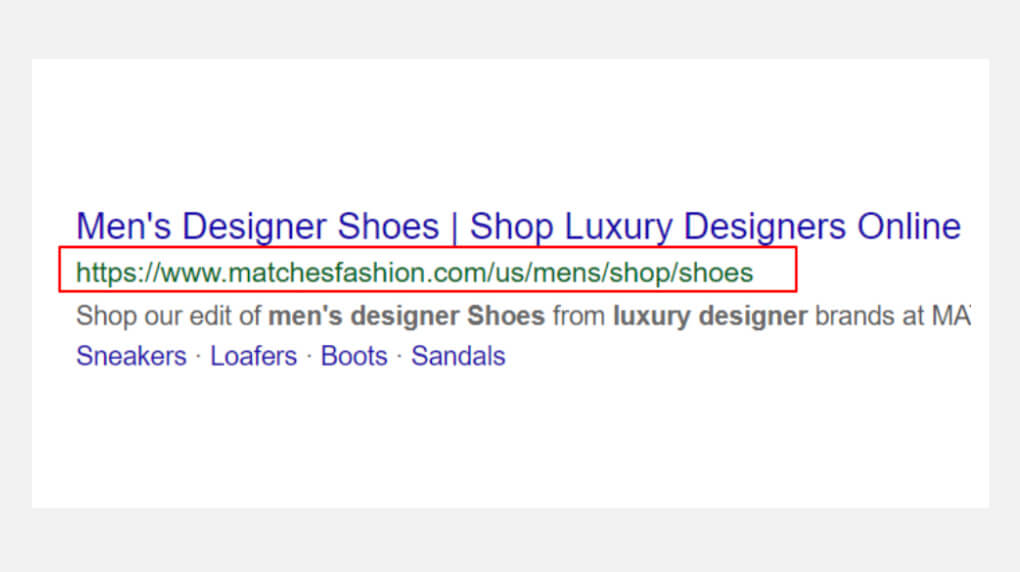
Example of URL structure for matchesfashion.com
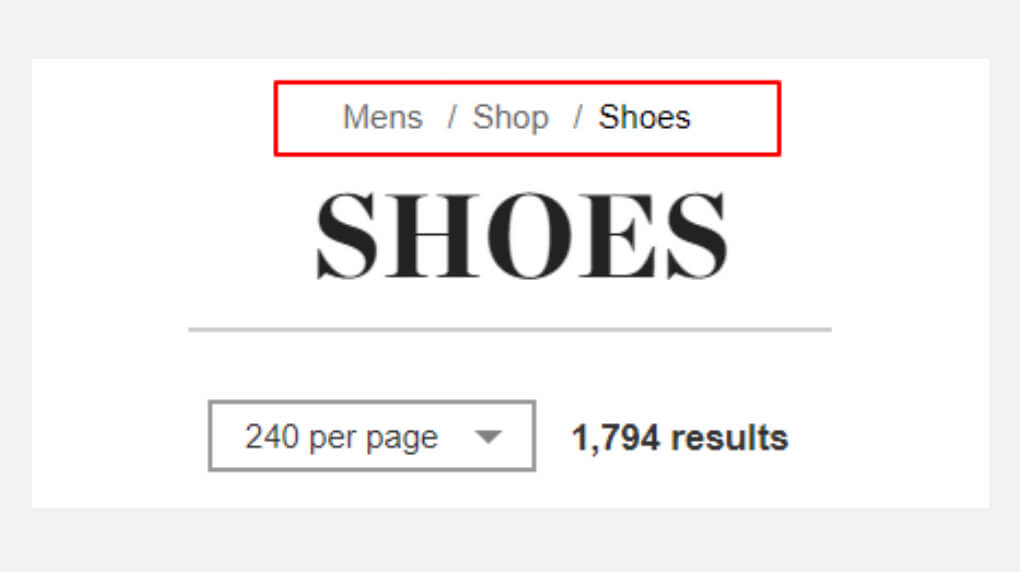
Breadcrumb structure for the same page.
Prepare for parameters
Another often overlooked but fundamental feature of any eCommerce website is URL parameters. These are essentially the numbers and letters that get tagged on to a URL based on user behavior.
Any example of a URL with lots of parameters would be: http://www.fasionwebsite.com/shop/?product-filter&type=mens+sandals
In this case, everything after /shop/ is the parameter, added to the URL because the customer used a filter function to look for, in this case, brown sandals. This information is useful for our analytics to know whos filtering for what, but we don’t want Google to index this URL for a few reasons. Firstly, the resulting page is displaying a list of men's sandals - this would essentially be a duplicate of the category page for men's sandals. Secondly, every time a uses filtering a parameter can be generated, resulting in thousands of extra URLs diluting the sites other pages presence in the SERP, and wasting crawl budget for the entire site.
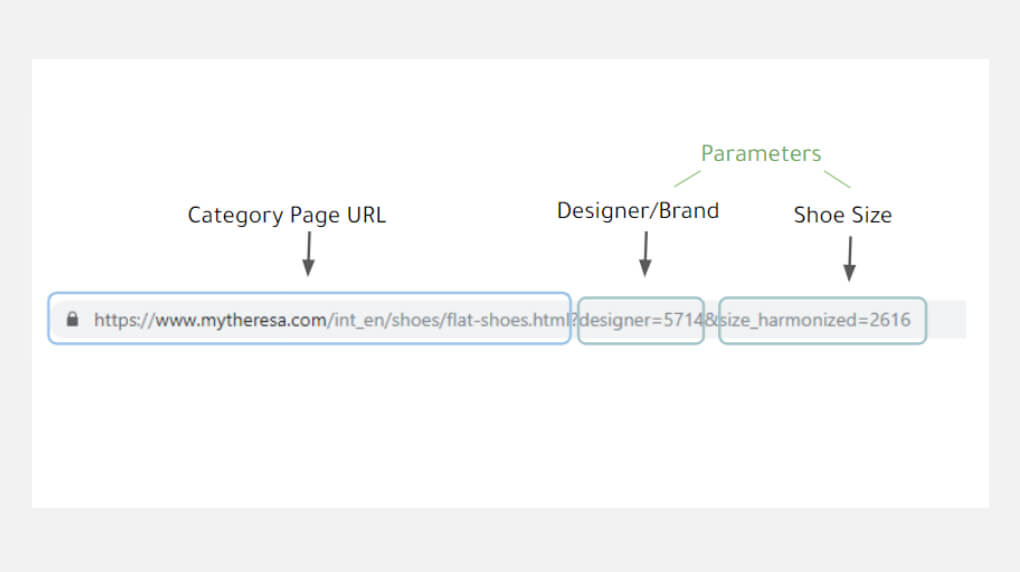
So what can be done to mitigate this? Luckily there are multiple ways to handle parameters, and this topic can be a big area of focus between SEOs and developers. But a few options include:
- Implementing rel=canonical tags on product & category pages
- Disallow crawling of certain URLs with Robots.txt
- Using the URL Parameters tool in Google Search Console.
Takeaway: the solutions for technical SEO might vary depending on the site, but structural and foundational optimization can have huge benefits for organic traffic performance.
Content is still king
If technical SEO is the foundation for our websites organic performance, then content is the bricks and mortar. As search engine algorithms get smarter over time, the focus has gradually shifted from quantity to quality. It’s more important than ever to write human-centric content for users first and foremost. That means thinking about the search intent of each page and creating content that is useful, informative and above all enhances the UX of that page.
In the context of our clothing eCommerce website, some key elements would be:
- Optimized Title Tags & Meta descriptions - This one seems obvious but can sometimes be missed. There should be no gaps here, and duplication should be minimal.
- Clear Header markup - Each page should have a unique and clear <H1>
- PDP Copy - A thorough description of the product
- Images - Plenty of product images, with alt text added where possible
Leverage the power of structured data
Structured data (sometimes referred to as product schema or just schema) allows you to label pieces of content on your website so that the search engines can serve rich results to their users. Implementation can be super easy, or a little tricky depending on your website setup. If you need help here it’s a good idea to loop in your developer resource. Taking the time to do this can be hugely beneficial for the visibility and competitiveness of your products in the SERP.
Take reviews as an example. We all know that they are a huge factor for online purchasing decisions. Using structured data allows you to leverage product reviews you might have for a SKU and have them appear as rich snippets in search results. Check out the below example of a search result page for beats headphones - notice how the reviews and availability show up under the title. That’s the power of structured data in SEO.
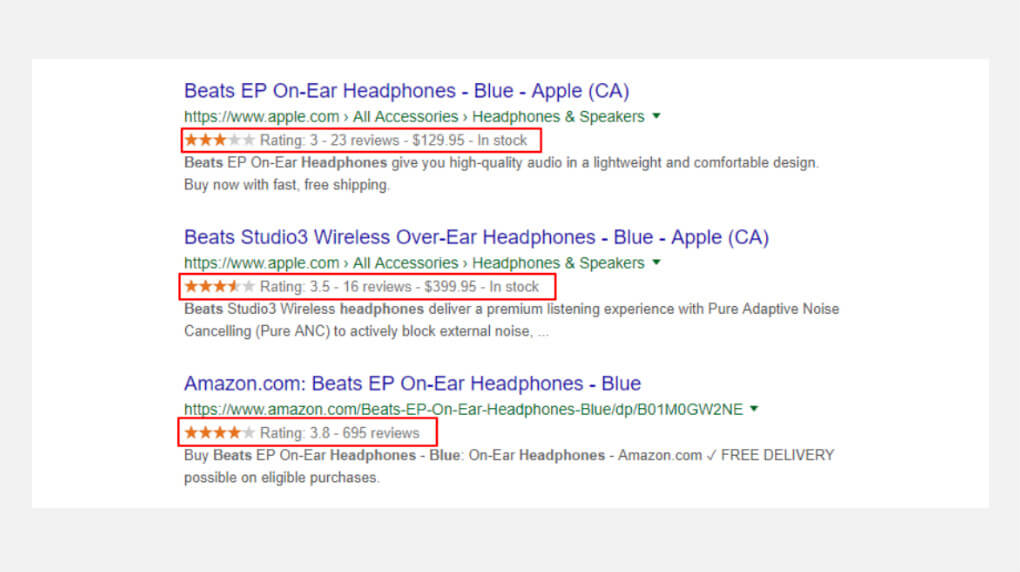
Other areas of your website that can be identified using structured data include:
- Product name
- Product description
- Price
- Brand
- Product hierarchy / Breadcrumbs
For more information on structured data implementation check out this guide from Google or this blog about rich snippets in eCommerce from Moz.
Blog Strategy
If your website does have a blog/news section, this is a valuable outlet for fresh content that can inform, inspire and excite your customers while linking them back to your product or service.
Let’s say our clothing website wants to talk about winter coats. Now is the time for copywriters to shine! Again, when it comes to blogs the goal to create quality content that meets a user need, not just content for the sake of it. Going back to our keywords - now is the time to conduct research. You’ll want to consider:
- What are popular search terms related to winter coats?
- Are there any questions frequently being searched?
- Does your website have a unique value proposition you can talk about?
- Is there an opportunity to talk about seasonal styles or trends?
Once again the goal here is quality. Avoid publishing posts with thin or shallow content. You’ll usually be aiming for a balance of information and entertainment. Images are key, especially if you are showing off your product. Consider infographics, embedded video links, gifs, and so on. And remember, think mobile first!
Conclusion
In today’s world of super fast, mobile-first, no-click searches, it’s critical now more than ever to cover your bases when it comes to SEO. Because if you’re not doing it, your competitor is. While there’s no one-size-fits-all solution to SEO, there’s so much that can be done and we are here to build a strategy that works best for your website.